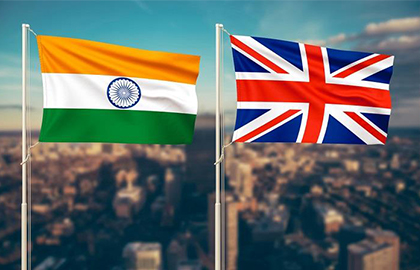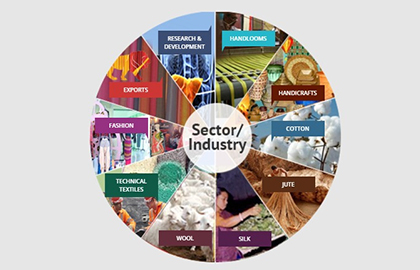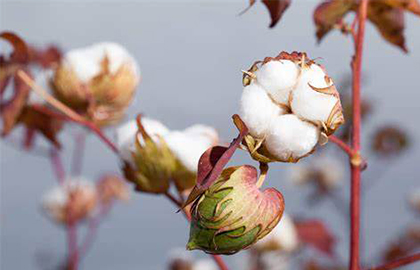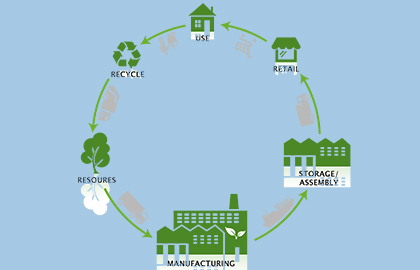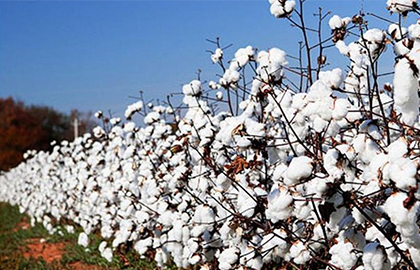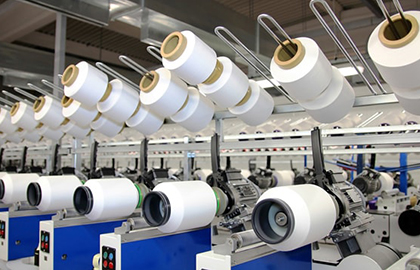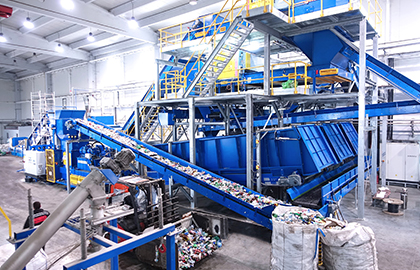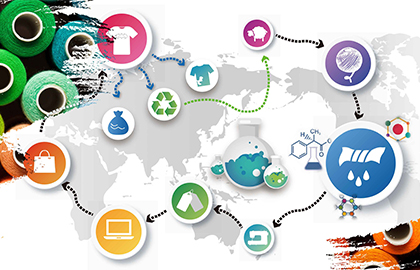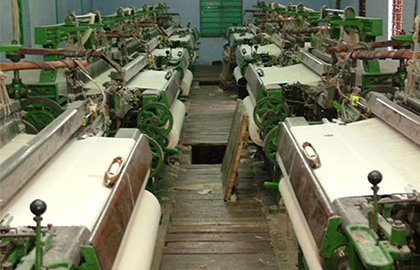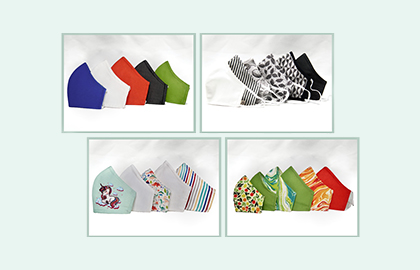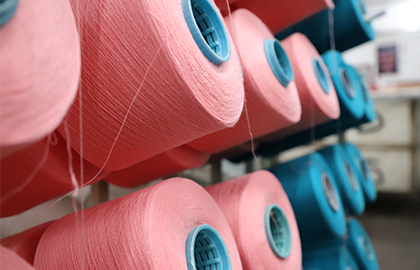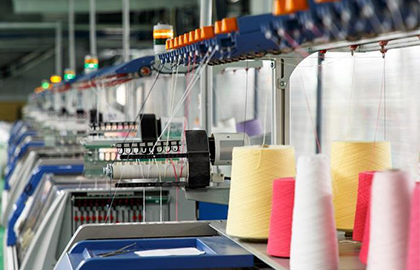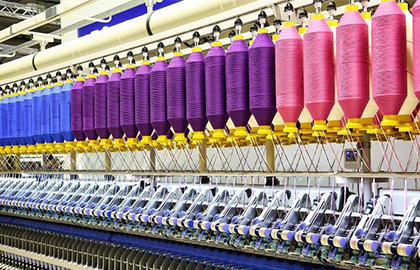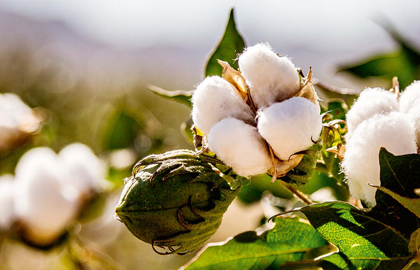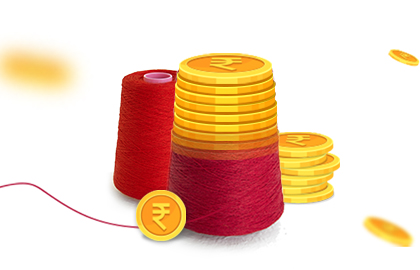
Cotton- the White Gold of India
cotton the most sought-after fibre in the textile industry:
At 25% of the global total, India is the world’s largest producer of cotton. It also has the largest area which cultivates cotton on earth representing about 38 % of the earth’s total area. The history of the cotton industry in India dates back to as long as 3000BC when it was exported as a bartering tool to Europe and Asia. Not much has changed since then as India still exports cotton in huge volumes to these continents-the only difference being the form of payment and the expansion of areas to which it is exported.
In the year 2019-2020 cotton production in India amounted to 6.42million metric tons. The export of cotton yarn and cotton fabrics accounts for about 23 per cent of India’s total textiles and apparel exports. The Crop Committee of the Association has estimated total cotton supply till end of the cotton season i.e. up to 30th September 2020 at 377.00 lakh bales of 170 kgs.
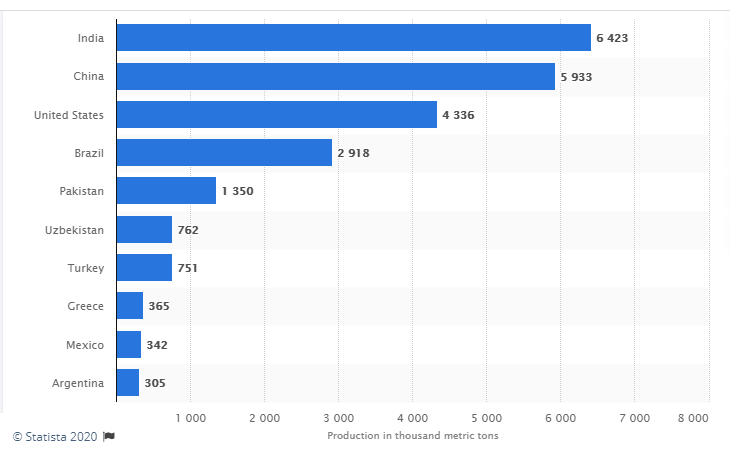
So what is it about Cotton that makes it such a big commodity? Simply put, Cotton can easily be called the “Gold of Textile Industry”. Like gold, cotton holds the highest value in terms of reliability in its industry.Approximately,75% of the world’s clothing products contain at least some amount of cotton. Ranging from pure organic cotton to blended cotton yarns, the textile industry banks the most on the use of this fabric.
There are numerous reasons which make cotton the most sought-after fibre in the textile industry:
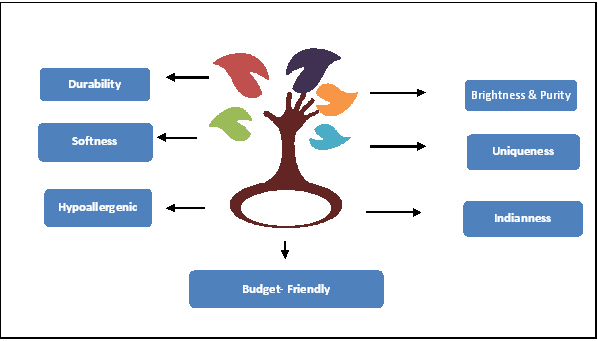
1 Durability: When purchasing a garment or home fabric like bed-sheets and curtains, the first thing a buyer looks for is durability. Due to its hig h tensile strength, cotton doesn’t rip or tear easily. Also, it is highly water absorbent and is one of the rare fibres which are 30% stronger when wet. This makes it easy to wash, especially in a machine wash.
2 Softness: It goes without saying that comfort is a primary factor when purchasing any garment. Unlike most other fabrics, cotton fabrics do not lose their softness post wash. This is a very desirable quality when purchasing infant wear, adult clothes as well as bed-sheets. Due to its strong and stretchable nature, cotton is an extremely comfortable fabric. It is also highly weather-resistant which means it can absorb sweat in summers as well as provide insulation in winters Cotton fabric is incredibly soft and also has heat retention attributes that make it something like a mixture of silk and wool. This rare characteristic provides comfort irrespective of the weather which makes cotton the most sought-after fibre used for garment manufacturing.
3 Hypoallergenic: Being a natural fabric, cotton is naturally hypoallergenic. Its softness in texture and easy wash nature makes it extremely suitable for sensitive skin. Due to its ability to remove body moisture caused by sweat, it keeps the body cool and minimises fungal breeding thus ensuring minimum chances of allergic reactions. It is also highly preferred as a fabric for bed sheets as cotton bedding improves the quality of sleep due to its hypoallergenic nature and soft texture.
4 Uniqueness: Since the earliest days of cotton cultivation, this fabric has been prized for its uniqueness -its exceptional breathability and lightness as well as its ability to easily mix with other fabrics. Just like the colour white which compliments everything, cotton is one of those rare fibres which can be mixed with most fibres and moulded into common clothing fabric, like broadcloth, calico, chino, corduroy, denim, duck, gingham, and seersucker. Due to this uniqueness, cotton is extremely sought after in all fabrics. Cotton-blended yarns are also extremely popular in the garment industry.
5 Brightness & Purity: There is a reason why Cotton is also referred to as white gold. Like gold shines bright, cotton‘s whiteness, lustre and brightness too retain its white hue and shine. Brightness and lustre is an important characteristic for home furnishings like curtains and bedspreads.
Due to the relatively natural manufacturing as compared to its peers, cotton’s purity is retained along with its whiteness. This purity is highly favoured in infant clothing as well as high label brand wear.
6 Indian-ness: In the current state of the world, one of the learning has been to purchase locally. On 8th October, Minister of Textiles Smriti Irani launched 'Kasturi Cotton', the first-ever Brand and Logo for Indian Cotton on Second World Cotton Day through video conferencing which will represent whiteness, brightness, softness, purity, lustre, uniqueness and Indian-ness. With the government introducing various lucrative schemes under “Make in India” campaign as well as the recently passed Agricultural Reform Bills, local entrepreneurs for garments have bloomed in all parts of India. Buyers are now spoilt for choice with India made garments and home textiles. The ready availability of superior quality fabric in their own backyards is definitely a booster in the sale of cotton.
7 Budget-Friendly: Cotton is one of the cheapest fibres in textile manufacturing due to its low-cost harvesting. Being a natural fabric as opposed to synthetic fibres, cotton is relatively inexpensive. Obviously, this makes it the most purchased fibre for the textile industry.
Such desirable characteristics have ensured that despite the invention of numerous synthetic fibres and the discovery of many natural fibres, cotton has maintained its supremacy over the millennia. Even the fact that cotton is wrinkle-prone has not been a deterrent in its popularity. In sheer numbers, cotton is the most widely used textile fibre in the world, and manufacturers can spin this fabric into a myriad of different types of products.
Like gold in the jewellery sector, cotton reigns supreme in the textile industry. This “White Gold of India” has remained one of the top exports of India over the ages. From quality to comfort, lustre to softness – this fibre has it all. With such desirable qualities, there is a fabric yet to be invented which can take away its crown.

